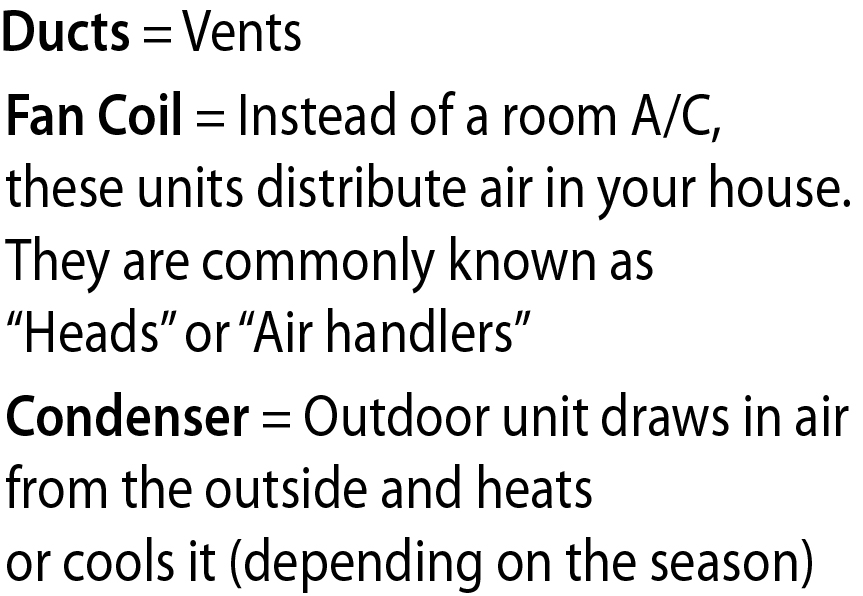By Samantha Bresler | Wed, July 22, 15
You’re an Air-Source Heat Pump believer and you’re itching to get one installed. After pouring over online reports and catalogs, visiting the cold climate ASHP listing, and checking out your neighbor’s system, you now consider yourself an expert. Without doubt, saving roughly 3,000 kWh and $300-459 annually is phenomenal – why leave money laying on the table? So tell me, what type of ASHP are you going to buy?
Ducted or Ductless or Short-run Ducted?
Split or Packaged?
Multi zone or Single zone?
Have I already lost you? Yes? Okay, let’s take a step back and start with some basic definitions.

- Ductless vs. Ducted vs. Short-run Ducted: Ductless applications are the poster child for ASHPs. They require minimal construction as the connection between the outdoor condenser and the indoor heads only requires a three-inch hole through the wall for a connection. Ducted systems use ductwork – plain and simple. If your home already has a ventilation system or the home will be a new construction, this may be a serious consideration. Short-run ducted is traditional large ductwork that only runs throughout a small section of the house. Short-run ducted is often complimented by with other ductless units for the remainder of the house.
- Split vs. Packaged: Ever wondered where the term “split” in “Ductless mini-split” came from? That term is prevalent because most heat pumps are split-systems -- that is, they have one coil inside and one outside. Supply and return ducts connect to the indoor central fan. On the other hand, packaged systems, usually have all the elements necessary for a complete installation in a single piece of outdoor equipment. Heated or cooled air is delivered to the interior that passes through a wall or roof. Packaged systems are also known as “unitary” systems because it is a factory-made assembly and includes a heating function.
- Multi zone vs. Single zone: Single zone are designed for a single room with one-to-one match of the outdoor condenser and indoor head. Multi-zone installations can range from 2 or more indoor heads connected to one outdoor condenser. Multi-zone indoor heads vary by size and style and each creates its own "zone" of comfort, allowing you to heat or cool individual rooms, hallways and open spaces. This distinction is also known as “Multi head vs. Single head” and “Multi port vs. Single port”.
So, could you hypothetically have a single zone, ducted, split system? Sure! Why not? Or, what about a ducted, packaged system? Yup, right again. But how do you determine what’s the best choice for your home?
Before you decide, be sure to check out the ASHP incentives that are available in your state. Since ASHPs offer the potential to significantly reduce energy use in homes― for electric, gas, heating oil and propane―efficiency programs are lining up to offer large rebates and incentives. They’ll walk you through the options and help you determine the right option for your home. They may even help you answer the question, “Which ASHP am I buying?”
